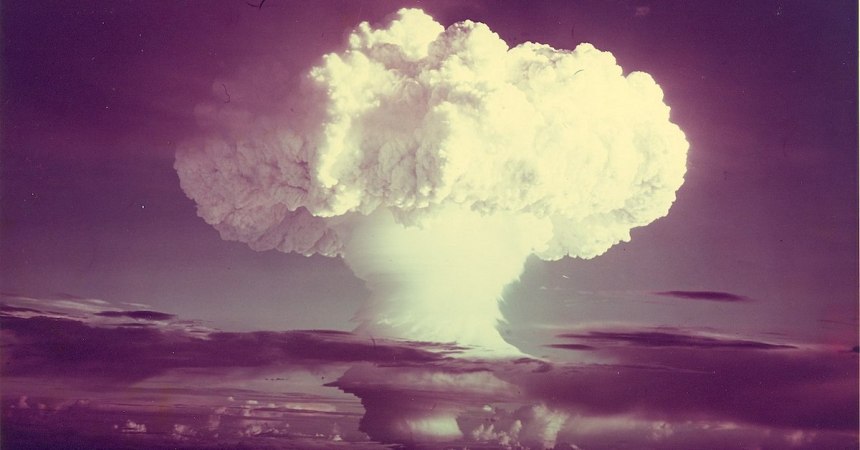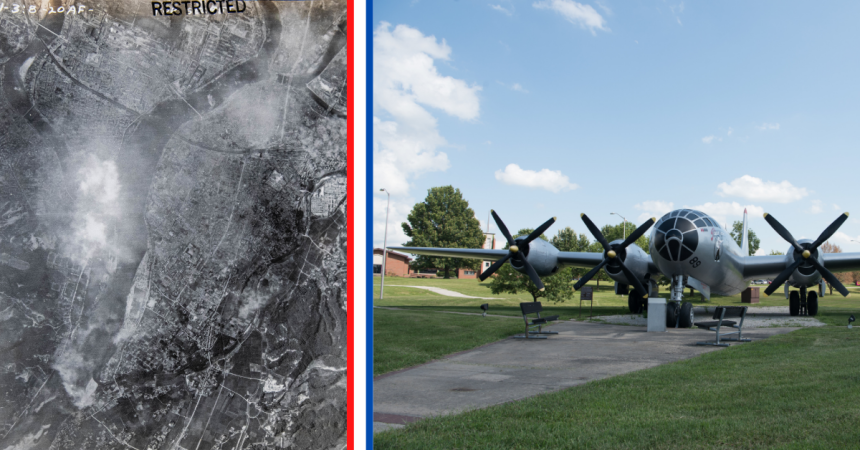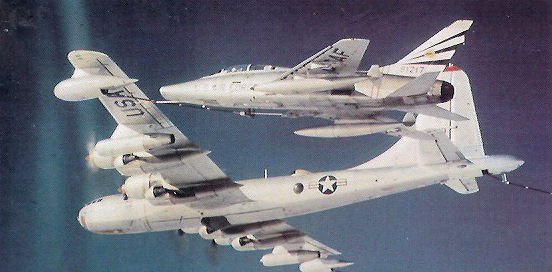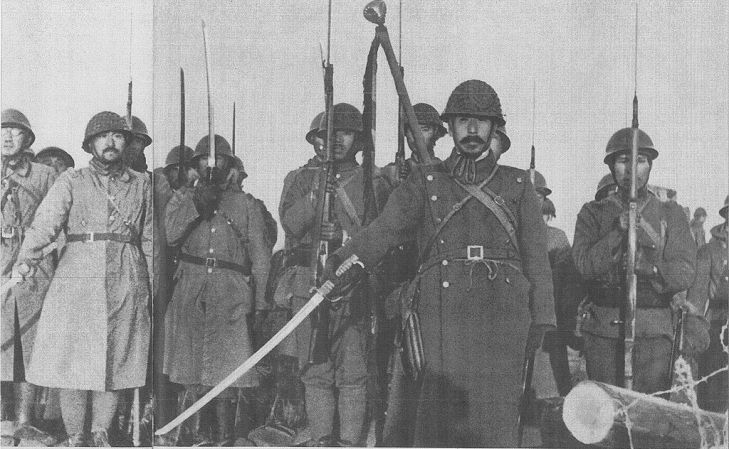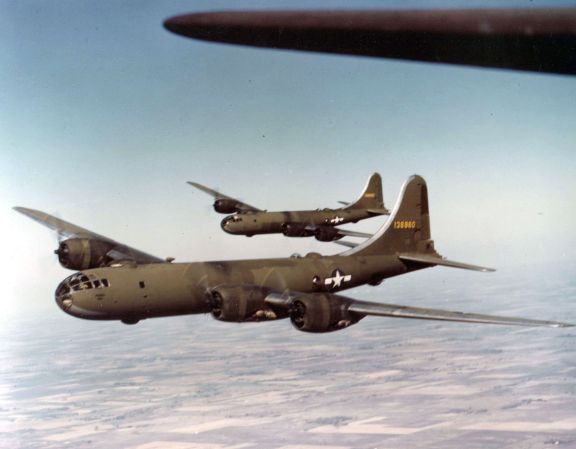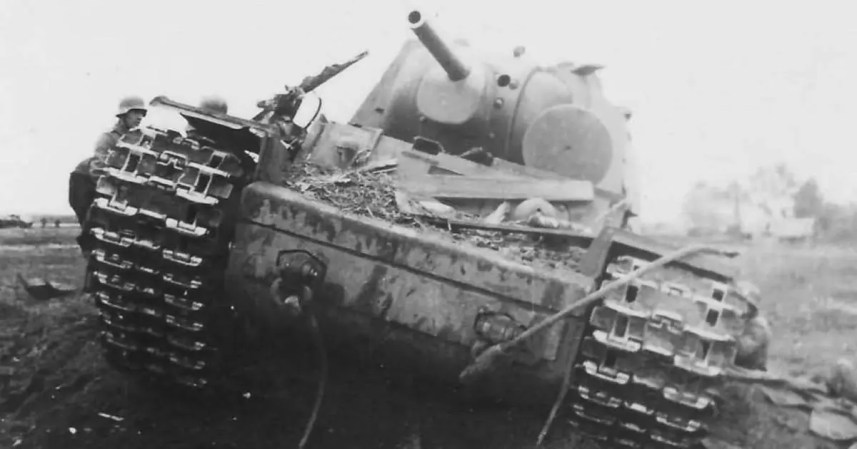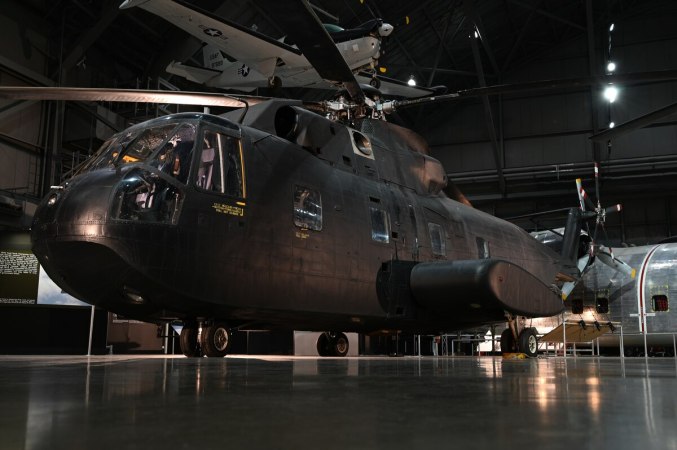
On August 6th and 9th of 1945, the United States dropped atomic bombs over the Japanese cities of Hiroshima and Nagasaki, causing significant death and destruction in both places. To this day, the bombings remain history’s only acts of nuclear warfare.
A lot has been established about the immediate preparations for the dropping of the bombs, known as “Little Boy” and “Fat Man,” which were loaded onto airplanes on the North Field airbase on Tinian Island, part of the Northern Mariana Islands to the south of Japan.
Until recently few photographs were available of the final hours before the bombings. But newly declassified pictures shed additional light on the procedures leading up to the nuclear attacks, giving a chilling glimpse into how and where the most destructive bombs ever used in warfare were loaded.
(First seen on AlternativeWars.com)
Soldiers check the casings on the “Fat Man” atomic bomb. Multiple test bombs were created on Tinian Island. All were roughly identical to an operational bomb, even though they lacked the necessary equipment to detonate.

On the left, geophysicist and Manhattan Project participant Francis Birch marks the bomb unit that would become “Little Boy” while Norman Ramsey, who would later win the Nobel Prize in Physics, looks on.

A technician applies sealant and putty to the crevices of “Fat Man,” a final preparation to make sure the environment inside the bomb would be stable enough to sustain a full impact once the bomb was detonated.

Soldiers and workers sign their names and other messages on the nose of “Fat Man.”

Here’s a closer look.

“Fat Man” is loaded onto a transport trailer and given a final once-over.

The bomb is then escorted to the nearby North Field airbase on Tinian, shrouded in tarp.

At the airfield, “Fat Man” is lined up over a pit specifically constructed for it, from which it is then loaded into the plane that dropped it over Nagasaki on August 9, 1945.

Both pits for “Little Boy” and “Fat Man,” each roughly 8 feet by 12 feet, still exist today on the island and now serve as a memorial.

The bomb and its trailer are lowered down into the pit using a hydraulic lift.

Workers check “Little Boy” one last time, keeping the tarp on for security reasons. They used a similar lowering procedure for “Fat Man” three days later.

Once “Little Boy” is ready, the Enola Gay, a Boeing B-29 Superfortress bomber, is reversed and positioned over the trench.

The tarp is removed and the bomb is readied for loading.

Using the hydraulic lift, “Little Boy” is carefully raised and loaded into the belly of the Enola Gay.

Once inside the plane, the bomb is secured and all connections and equipment are checked again.

From there, both “Little Boy” and “Fat Man” were flown over Hiroshima and Nagasaki, respectively, and detonated. World War II ended shortly afterwards, but at a cost: an estimated 250,000 people were killed or injured in the attacks, most of them civilians.

Video of the preparation and loading also exists.
More from Business Insider:
- Former ISIS fighter explains why he joined the terror army — and why he left after just 3 days
- Israeli spy Jonathan Pollard granted parole, will be released in November
- It’s been 20 years since the Srebrenica massacre, one of the most horrific atrocities since World War II
- This stunning combat art reveals what aerial warfare was like during World War II
- Hilary Clinton: Here’s the ‘principle threat’ ISIS poses to the US
This article originally appeared at Business Insider Defense. Copyright 2015. Follow BI Defense on Twitter.







